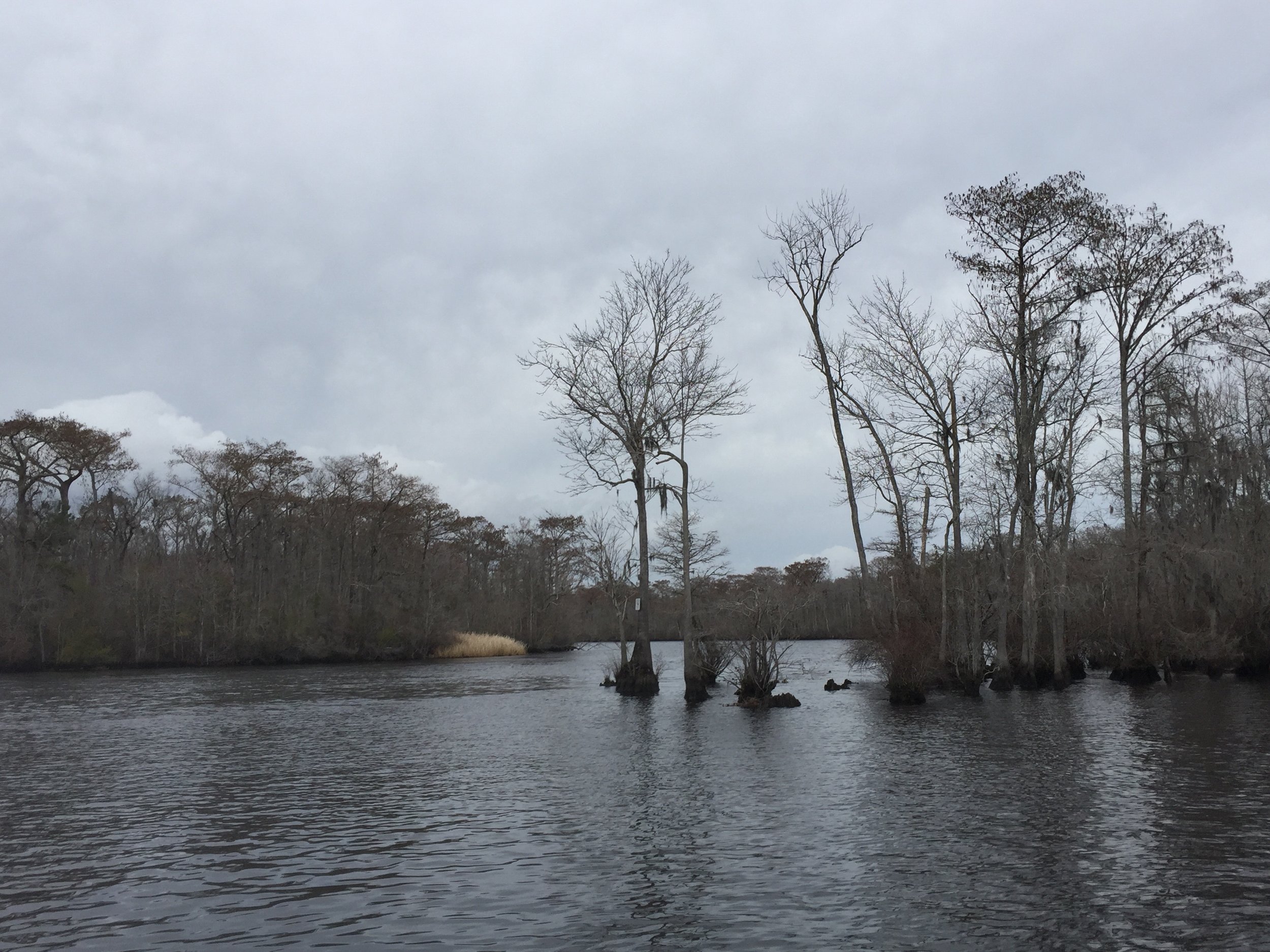While heading south towards the Bahamas, we were faced with an option: Head offshore and make it to the Bahamas in a few days, or stay in the ICW a little longer until Georgetown and experience the Waccamaw River.
We chose the latter option.
Getting to the Waccamaw River was no easy feat for us, as this river runs rather far inland compared to what we usually do. This meant that there are no inlets near the river and we would be forced to traverse the ICW a bit further. The ICW leading up to this area is rather shallow, causing us to run aground a few times while still in the channel. The sandy bottom changes with each tide, as the strong currents will shift the sands around in a hurry. Charted areas of 10 feet may only be 4 feet deep when you reach them, causing you to meet an abrupt stop in your forward movement.
The urban sprawl is also quite apparent as you make your way towards the Waccamaw River. Massive mansions line the waterway as you move down the ICW through Myrtle Beach. These giant houses have stripped away all that was once there and replaced it with a well orchestrated construct of conceived beauty.
It is apparent that you are leaving the ritzy section as the houses transform from wealthy to derelict.
Wooden shacks that are barely standing will extend out onto the waterway. These houses will become less and less common as you work your way into the natural beauty of the river.
Cypress trees grow right on the edge of the river in waters of mind blowing depths. You will find water depths of 20 feet right up next to these massive trees that stand proud on the rivers edge.
Most of the time, we search for a section of water deep enough to anchor while in the ICW, but in the Waccamaw River, we search for a section that is shallow enough to anchor. The Fathometer will usually read depths of 2-3 feet under our keel as we made our way through the ICW, but when we reached this river, that all changed and we started reading depths of 25-30 feet under our keel. We were excited to find a place that had 7 feet under our keel, allowing us to anchor with only 160 feet of chain instead of the over 200 feet we would have needed in the deeper sections.
The best part of the river so far has got to be being anchored in a Oxbow, next to the trees and listening to the life that is teeming just beyond our hull. The frogs and crickets are singing away, and every so often, you will hear a new and unfamiliar sound in the distance. Everything is dark and the silhouette of the trees shows over the cloudy night sky with light pollution raining in from nearby Myrtle Beach.
We have only begun our journey in the river, but already, we are glad to have endured such hard times to reach this place.





